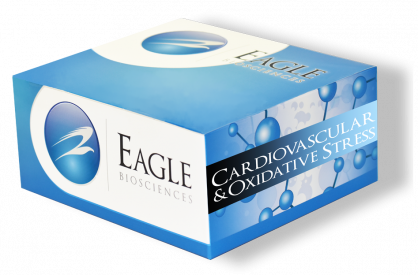Swine IL-10 ELISA Assay
The Swine IL-10 ELISA Assay is For Research Use Only
Size: 1×96 wells
Sensitivity: 7 pg/mL
Dynamic Range: 15.625 – 1000 pg/ml
Incubation Time: 3 hours
Sample Type: Serum, Plasma, Cell Culture
Sample Size: 100 µl
Alternative Names: Porcine Interleukin 10, Porcine IL-10, Swine Interleukin 10, Cytokine Synthesis Inhibitory Factor, CSIF
Assay Background
Interleukin 10, also known as cytokine synthesis inhibitory factor (CSIF), is the charter member of the IL-10 cytokine family. This family currently comprises IL-10, IL-19, IL-20, IL-22, IL-24, and IL-26/AK155. All IL-10 family members are secreted α-helical proteins. Porcine IL-10 is a secreted, possibly glycosylated, polypeptide with an 18 kDa molecular weight. Based on human studies, porcine IL-10 is likely to circulate as a nondisulfide-linked homodimer. Porcine IL-10 is synthesized as a 175 amino acid (aa) precursor with an 18 aa signal sequence and a 157 aa mature form. The mature segment has one potential N-linked glycosylation site plus four cysteines which form two intrachain disulfide bridges. Mature porcine IL-10 shows 71%, 70%, 76%, 75%, 77%, and 71% aa sequence identity to rat, mouse, human, guinea pig, canine, and cotton rat IL-10, respectively. Upon activation, mammalian cells known to secrete IL-10 include NK cells, cytotoxic CD8+ T cells secreting Th2-like cytokines, CD4+CD45RA- (memory) Th1 and Th2 cells, macrophages, monocytes, CD5+ and CD5- B cells, dendritic cells, hepatic stellate (Ito cells), keratinocytes, melanoma cells, mast cells, placental cytotrophoblasts, and fetal erythroblasts.
The functional receptor for IL-10 (IL-10 R) in pigs has not been reported. By analogy to human, it would be expected to be composed of two 110 kDa a-chains (or IL-10 R1) and two 75 kDa b-chains (or IL-10 R2). The a-chain binds IL-10 and transduces a signal in the presence of a b-chain complex. Both receptors are members of the class II cytokine receptor family (CRF2) that is characterized by the presence of type III fibronectin domains and conserved tryptophans. This class does not possess the WSXWS motif characteristic of the class I CRF. There is no significant aa sequence identity (< 30%) between human IL-10 R1 and IL-10 R2. IL-10 has myriad effects on a variety of cell types. On activated B cells, IL-10 can induce plasma cell formation (32) and the secretion of either IgG or IgA (in the presence of TGF-b1 and/or IL-4). In the presence of IL-2, CD56+ NK cells will respond to IL-10 with increased proliferation plus IFN-g and TNF-a secretion. Conversely, on macrophages, IL-10 is known to downregulate IL-1, TNF-a, and IL-6 production . On dendritic cells, IL-10 has been shown to interfere with antigen-presenting cell function by downmodulating stimulatory and co-stimulatory molecules. On monocytes, IL-10 is reported to direct monocyte differentiation into cytotoxic CD16+ macrophages rather than antigen-presenting dendritic cells.
Related Products
Swine IL-4 ELISA Assay
Swine IL-2 ELISA Assay
Mouse IL-10 ELISA Assay


